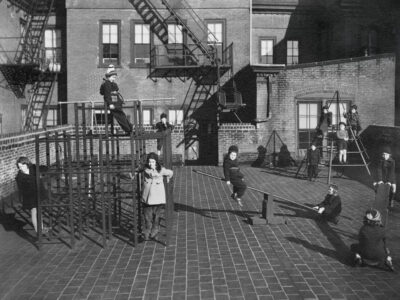When Jane Hileman, CW’72, GEd’73, describes the successful reading program she devised for Philadelphia students, she speaks in bold terms: “This is about saturation. This is about bombardment.”
It’s about kids reading, independently, at least 100 books per marking period. The books can be short and simple — that’s partly the point. If children read plenty of books and have fun in the process, they will become better at it, figures Hileman, an instructor in Penn’s Graduate School of Education and a teaching and learning network facilitator in the Philadelphia School District.
“The concept of ‘no pain, no gain’ was not working,” she
explains, and the schools of the approximately 300 classroom teachers
who have adopted her flexible reading initiative — the “100 Book
Challenge” — are already reporting
impressive results.
Hileman combined her experiences as a teacher, reading tutor,
graduate student, and mother of two to create the program, which she
believes gives young readers the incentives, confidence, and independent
learning skills they need to improve.
The first step, she says, is to “fill the room with books.”
Hileman scoured flea markets and library sales to find enticing
selections for the Southwest Philadelphia classes she works with. Books
are color-coded based on difficulty, from picture books with one word
per page to long chapter books (broken down into 15-minute reading
segments).
Then the teacher assesses each child’s reading level. Students
devour the books of their choice during daily reading workshops while
the teacher offers one-on-one help. To demonstrate reading
comprehension, students may keep written logs or create a play or comic
strip based on a book. Next comes home-reading, ideally with family
members participating. Finally, reading is integrated with other
subjects. “We have second- and third-graders studying water,” says
Hileman. “So the books they read are about frogs and molecules. They’re
actually doing research projects.”
In addition to the intrinsic rewards that accompany a job well
done, students in most classrooms get small material incentives for
plowing through those pages. Some teachers pass out stickers and
pencils; one neighborhood store honors “certificates” for snack
purchases; and in Hileman’s schools, students get to strut around with a
gold medal for every 100 books they read. “They wear them layered
around their neck, two or three gold medals,” she says. “They wear them
to school every day.”
Test results show her approach works. To give a typical example,
nearly 70 percent of students at one North Philadelphia elementary
school read at the basic level, compared to less than 50 percent before
the program was implemented. “But the kind of data I like,” she jokes,
“is when I walk into a middle school and the science teacher says, ‘I
can’t get them to do my science work — because they’re all reading
books under their desks.'”




